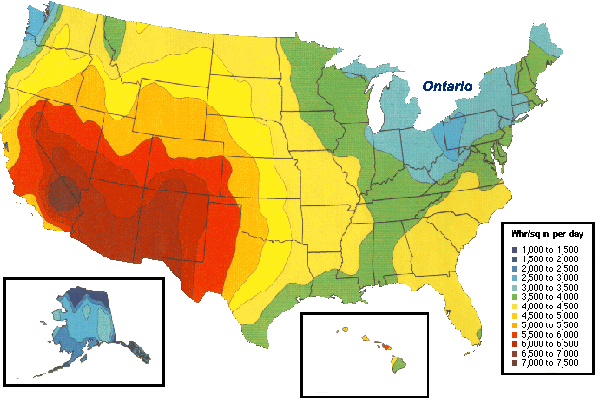A Lesson In Solar From A Northern Neighbor
Originally posted at ilsr.org.
Based on population, Ontario would be the 5th largest state if it were part of the U.S., but its installed solar capacity, 1,500 MW would rank it 3rd. The province has also shut down all its coal-fired power plants. How does a northern province become a solar and climate leader, despite one of the poorest solar resources in North America?
Smart policy.
In 2008, the province adopted a feed-in tariff program, offering any Ontario individual or business the right to connect a solar array to the grid and get paid on a long-term contract with sufficient revenue to make a modest return on investment. The policy was noteworthy for also requiring the purchased solar arrays to be made in Ontario, juicing up the economic benefit of the solar purchases.
There was a surge of interest, and program administrators quickly fell behind in processing applications. In ILSR’s 2013 review of the feed-in tariff program, we applauded the 5,000 MW of new renewable applications, but noted that significant delays in connecting projects—just 10% were operational—meant the province fell short of its jobs and economic development goals. Despite the delays, Ontario still surged past most U.S. states in solar capacity (only California and Arizona have more). And although its goals were higher, the projects developed through 2013 still led to over 30,000 new jobs in the province.
Ontario’s feed-in tariff also meant a wide diversity in solar ownership. Reports from the feed-in tariff program suggest that as many as 1 in 7 Ontario farmers were able to supplement their agricultural income with solar.
The accomplishment is even more remarkable given the poor solar resource. Ontario’s is worse than almost every U.S. state. A comparable solar array in California or Arizona will produce nearly twice the electricity as one in Ontario.
Given the relative solar resource (and the closing of coal plants), you might assume electricity in Ontario has high electricity prices, but the reverse is true. The monthly average wholesale power cost in Ontario was just 1.65¢ per kilowatt-hour in March 2015.
The Ontario lesson is that solar development takes good policy, and the more democratic the policy, the wider the benefits.
This article originally posted at ilsr.org. For timely updates, follow John Farrell on Twitter or get the Democratic Energy weekly update.
Have a tip for CleanTechnica? Want to advertise? Want to suggest a guest for our CleanTech Talk podcast? Contact us here.
Latest CleanTechnica.TV Video

CleanTechnica uses affiliate links. See our policy here.

